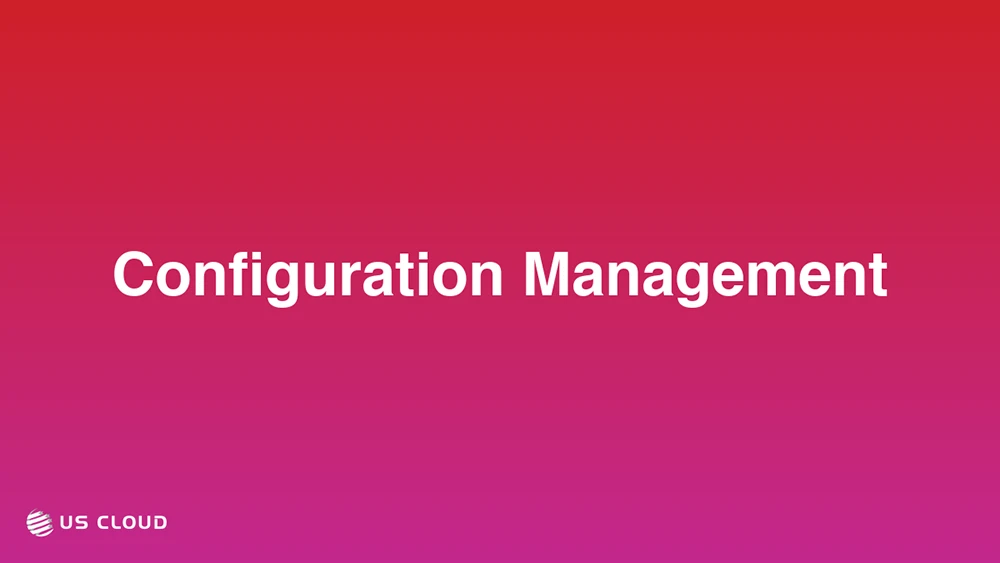Configuration Management.

What is Configuration Management?
Configuration Management (CM) is a vital discipline in the realm of Information Technology that focuses on systematically managing changes to both software and hardware components throughout their lifecycle. This process is essential for organizations aiming to maintain accurate and up-to-date information about their IT assets, including their relationships and configurations.At its core, Configuration Management is about creating a single source of truth for all IT components. This allows teams to make informed decisions and maintain control over increasingly complex systems. Effective CM practices enable organizations to:
- Minimize the risk of unintended consequences from changes.
- Improve system stability and reliability.
- Facilitate compliance with regulatory requirements.
- Enhance incident management and problem resolution.
- Support strategic IT planning and decision-making.
By implementing CM, organizations can ensure that they are not only reactive but also proactive in managing their technological environments.
Key Components of Configuration Management
Configuration Management consists of several key components that work in tandem to create a robust system for managing IT assets effectively. Understanding these components is crucial for any organization looking to implement CM successfully.
Configuration Items (CIs)
Configuration Items are the foundational elements of CM. They represent any component within the IT infrastructure that needs to be managed. CIs can include:
- Hardware: Servers, routers, switches, etc.
- Software: Applications, licenses, and patches.
- Documentation: Procedures, manuals, and policies.
- Services: External contracts and service agreements.
Each CI is uniquely identified and tracked throughout its lifecycle. This tracking includes detailed information about attributes, relationships, and any changes made over time. By managing CIs effectively, organizations can maintain clarity regarding their IT landscape.
Configuration Management Database (CMDB)
The Configuration Management Database (CMDB) serves as the central repository for all configuration information. It stores data about CIs, their relationships, and configurations, providing a comprehensive view of the entire IT infrastructure.
Key features of a CMDB include:
- Centralized storage of CI information.
- Visualization capabilities to illustrate relationships between CIs.
- Integration with other IT management processes for seamless operations.
- Support for change management and impact analysis.
A well-maintained CMDB is essential for ensuring that all stakeholders have access to accurate information when making decisions or addressing issues.
Change Management Process
A robust change management process is integral to maintaining the integrity of configurations within an organization. This process involves several critical steps:
- Documenting Proposed Changes: Clearly outline what changes are being proposed and why they are necessary.
- Assessing Impact: Evaluate how these changes will affect related CIs and the overall system.
- Obtaining Approvals: Ensure that necessary stakeholders review and approve changes before implementation.
- Implementing Changes: Execute changes in a controlled manner to minimize disruption.
- Updating the CMDB: After implementation, ensure that the CMDB reflects the new configuration accurately.
By following these steps diligently, organizations can manage changes effectively while minimizing risks associated with configuration alterations.
Benefits of Implementing Configuration Management
Adopting a comprehensive Configuration Management approach offers numerous benefits that can significantly enhance an organization’s operational efficiency.
Improved System Stability and Performance
One of the most immediate benefits of effective CM is improved system stability. By maintaining accurate configuration information, organizations can:
- Reduce the risk of configuration-related incidents that may disrupt operations.
- Quickly identify and resolve issues when they occur, minimizing downtime.
- Ensure consistent configurations across similar systems, leading to predictable performance.
This stability not only enhances user satisfaction but also boosts overall productivity within the organization.
Enhanced Decision-Making and Planning
Configuration Management provides valuable insights that support strategic decision-making processes. With accurate data at their disposal, organizations can:
- Maintain a clear inventory of IT assets and their interrelationships.
- Gain a comprehensive understanding of system dependencies, which aids in troubleshooting.
- Utilize data-driven insights for capacity planning and resource allocation.
These capabilities empower organizations to make informed decisions that align with their strategic objectives.
Streamlined Compliance and Auditing
Compliance with regulatory requirements is increasingly important in today’s business environment. Effective CM practices facilitate this compliance by:
- Maintaining detailed records of system configurations over time.
- Providing audit trails for changes made to configurations.
- Supporting the implementation of necessary security controls.
By ensuring compliance, organizations can avoid potential penalties while also enhancing their reputation among stakeholders.
Faster Incident Resolution
When incidents arise within an IT environment, having a solid Configuration Management framework in place allows teams to respond more effectively. Organizations benefit from:
- Rapid identification of affected systems and components during an incident.
- A clear understanding of potential impacts based on existing configurations.
- The ability to implement targeted fixes or rollbacks quickly when necessary.
This agility in incident response not only minimizes disruptions but also fosters trust among users who rely on these systems daily.
Best Practices for Effective Configuration Management
To maximize the benefits of Configuration Management, organizations should adopt several best practices that promote efficiency and effectiveness within their CM processes:
- Establish Clear Policies: Develop well-defined policies and procedures for all aspects of CM processes to ensure consistency across teams.
- Implement Automated Tools: Utilize automated tools for discovering and tracking CIs to reduce manual errors and improve accuracy.
- Regular Audits: Conduct regular audits to validate configuration data and ensure it remains current and accurate.
- Integrate with Other Processes: Ensure that CM integrates seamlessly with other IT service management processes such as incident management or problem management.
- Provide Training: Offer training sessions for staff involved in CM activities to enhance their understanding and skills related to best practices in configuration management.
- Continuous Improvement: Foster a culture of continuous improvement by regularly reviewing processes based on feedback and performance metrics.
By following these best practices, organizations can create a robust framework for effective Configuration Management that supports their long-term goals.
Conclusion
Configuration Management is an essential discipline for maintaining the stability, reliability, and efficiency of IT systems within any organization. By implementing a comprehensive CM process, businesses can gain better control over their IT assets while reducing risks associated with changes. Moreover, effective Configuration Management enhances incident response capabilities and supports strategic planning efforts.
As technology environments continue to grow in complexity, the importance of effective Configuration Management will only increase. Organizations that prioritize this practice will be better positioned to navigate challenges while maximizing operational efficiency—ultimately leading to greater success in achieving their business objectives.
